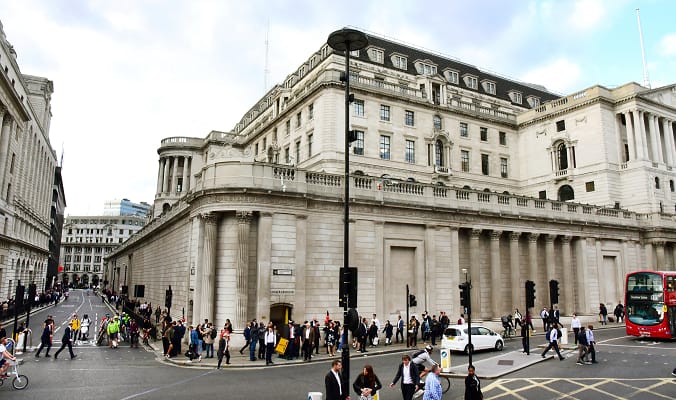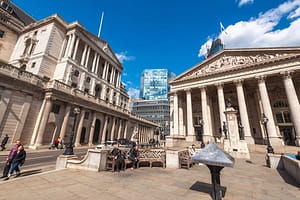Interest rates are likely to peak below market expectations, figures out today showed.
Bank of England set to beat the US to the pivot, which is bad for the pound.
A recession is looming, and unemployment will rise
AJ Bell head of investment analysis Laith Khalaf comments on today’s commentary from the Bank of England MPC and the outlook for future rate rises: “It’s shocking to think that only a year ago, interest rates stood at just 0.1%, and that even after eight consecutive rate hikes from the Bank of England, markets still think we’re only part of the way to the top of the tightening cycle. We’re entering a brave new world of higher interest rates, and that has huge ramifications for consumers, businesses, governments, and investors, especially after such an extended period of ultra-loose monetary policy, which has lulled everyone into a false sense of security.
“But today’s report contained some nuggets of information which may be seized upon as a ray of hope by debt-laden businesses and consumers. The market is currently expecting interest rates to peak at 5.25% next year, but on that assumption the Bank of England says inflation will fall to 0% in 2025, 2% below its target. Even assuming interest rates remain at 3%, CPI comes in around 1% below target in 2025. The implication is that markets have got ahead of themselves, have priced in too many interest rate hikes, and actually we are now approaching the top of the cycle. In its commentary the Bank says its rate-setters think rates will peak at a lower level than expected, though they still threaten to act forcefully if inflation proves sticky.
“Of course, there are still a great number of unpredictable variables at play which mean the prolonged inflation and higher rates envisaged by the market may still transpire. The war in Ukraine is of course still ongoing, trade barriers are gradually being erected, and the energy price freeze may cause consumers to be a little more free and easy with their spending than expected. Or the Bank’s models may simply prove to be wrong – it wouldn’t be the first time. It’s also fair to point out that a technical change to the Bank’s modelling of future energy prices has contributed to a lower inflation projection, and at the same time the Bank has had to guesstimate what the government is going to do about energy bills after the current scheme ends. This goes to show why economics is known as the dismal science. The inputs selected play a huge part in shaping the final figures, and they may prove to be wholly divorced from reality.
“The government’s fiscal policy is also a big piece of the jigsaw that is still missing, and will probably serve to dampen the need for rate hikes. The new Chancellor is due to set out his plan to fill the estimated £50 billion black hole in the nation’s finances on 17th November, through a combination of tax rises and spending cuts. The Autumn Statement will therefore almost certainly squeeze some more juice out of the tank of the UK economy, meaning the Bank of England can pursue a more moderate path with monetary policy.
“No-one should count their chickens at the current juncture, but this report from the Bank of England at least hints at some light at the end of the tunnel when it comes to the cost of living crisis. But while inflation is projected to fall back rapidly, the cost to the economy is expected to be a prolonged recession. The nightmare scenario presented by interest rates rising in line with market expectations is that the economy shrinks for the next two years, and unemployment rises to 6.5% in 2025. It now seems evident the Bank would only be forced to tip the economy into such a parlous state if inflation turns out to be more persistent than currently anticipated. If the Bank were to maintain rates at 3%, the economy is projected to shrink in 2023 and pick up a little bit in 2024, with unemployment rising to just over 5%. As things stand, the reality is likely to sit somewhere between these two outcomes, with the Bank saying more interest rate hikes are needed, but not as many as predicted by the market. Either way, the UK economic picture is pretty bleak for the foreseeable future.
“The Bank’s commentary and projections stand in stark contrast to the rhetoric coming out of the US Fed, where Jay Powell has suggested interest rates may peak at a higher level than expected. Markets have been obsessed by when the Fed’s rate policy might pivot, but it seems the Bank of England will beat them to the punch. Interest rates started rising sooner in the UK, but the weaker economic picture probably explains why the Bank of England is blinking first on interest rate rises. This will put pressure on the pound, as more money flies towards the dollar, and the higher interest rates on offer across the pond.”






Leave a Comment